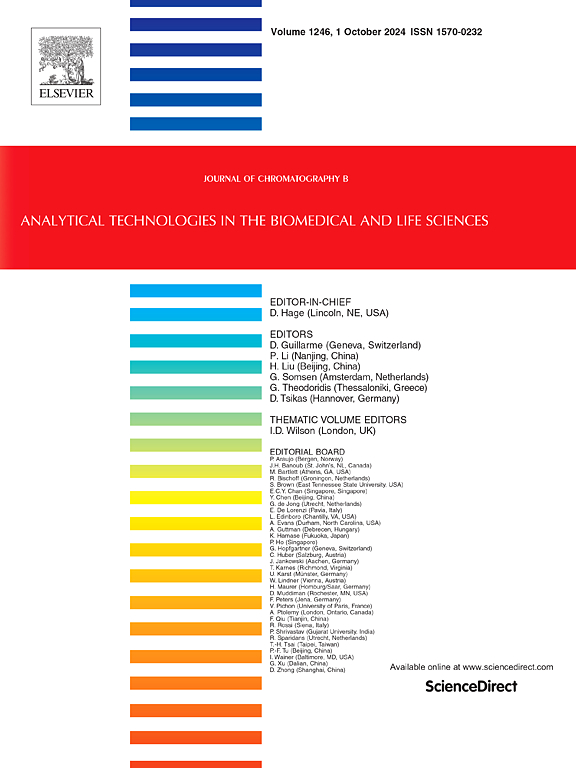PeakClimber: A software tool for the accurate quantification of complex HPLC chromatograms
IF 2.8
3区 医学
Q2 BIOCHEMICAL RESEARCH METHODS
引用次数: 0
Abstract
High-performance liquid chromatography (HPLC) is a common medium-throughput technique to quantify the components of complex mixtures like those typically obtained from biological tissue extracts. However, analysis of HPLC data from multianalyte samples is hampered by a lack of tools to accurately determine the precise analyte quantities on a level of precision equivalent to mass spectrometry approaches. To address this problem, we developed a tool we call PeakClimber that uses a sum of bidirectional exponentially modified Gaussian (BEMG) functions to accurately deconvolve overlapping, multianalyte peaks in HPLC traces. Here we show that HPLC peaks are well-fit by a BEMG function, that PeakClimber more accurately quantifies known peak areas than standard industry software and other open-source software packages for HPLC, and that PeakClimber accurately quantifies differences in triglyceride abundances between colonized and germ-free fruit flies.
peak攀登者:用于复杂HPLC色谱准确定量的软件工具
高效液相色谱(HPLC)是一种常用的中通量技术,用于定量复杂混合物的成分,如通常从生物组织提取物中获得的成分。然而,对多分析样品的HPLC数据的分析受到缺乏工具的阻碍,无法准确地确定精确的分析物数量,其精度相当于质谱方法。为了解决这个问题,我们开发了一个名为peak攀登者的工具,它使用双向指数修正高斯(BEMG)函数的和来准确地反卷积HPLC痕量中重叠的多分析物峰。在这里,我们证明了BEMG函数可以很好地拟合HPLC峰,PeakClimber比标准的工业软件和其他开源的HPLC软件包更准确地量化了已知的峰面积,PeakClimber准确地量化了定植果蝇和无菌果蝇之间甘油三酯丰度的差异。
本文章由计算机程序翻译,如有差异,请以英文原文为准。
求助全文
约1分钟内获得全文
求助全文
来源期刊

Journal of Chromatography B
医学-分析化学
CiteScore
5.60
自引率
3.30%
发文量
306
审稿时长
44 days
期刊介绍:
The Journal of Chromatography B publishes papers on developments in separation science relevant to biology and biomedical research including both fundamental advances and applications. Analytical techniques which may be considered include the various facets of chromatography, electrophoresis and related methods, affinity and immunoaffinity-based methodologies, hyphenated and other multi-dimensional techniques, and microanalytical approaches. The journal also considers articles reporting developments in sample preparation, detection techniques including mass spectrometry, and data handling and analysis.
Developments related to preparative separations for the isolation and purification of components of biological systems may be published, including chromatographic and electrophoretic methods, affinity separations, field flow fractionation and other preparative approaches.
Applications to the analysis of biological systems and samples will be considered when the analytical science contains a significant element of novelty, e.g. a new approach to the separation of a compound, novel combination of analytical techniques, or significantly improved analytical performance.
 求助内容:
求助内容: 应助结果提醒方式:
应助结果提醒方式:


